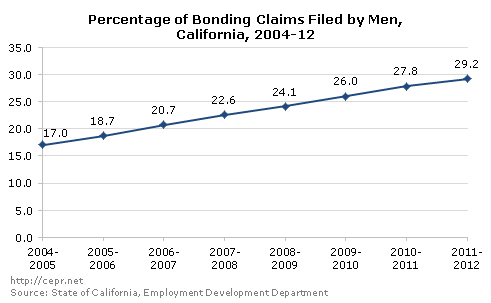December 12, 2013
A major source of gender inequality in the labor market is the earnings penalty that women typically experience when they become mothers. While outright gender discrimination has by no means been eliminated, it has been greatly reduced since the 1970s as women’s educational attainment and career aspirations have increased. Yet the pay gap between men and women remains and, in fact, widens steadily over the typical female career. Motherhood appears to be central to this widening gap. Even mothers who do not significantly reduce their hours of paid work receive average earnings that are significantly less than those of comparable childless women. This ‘motherhood penalty’ is due in part to the persistently asymmetric gender division of parenting and other family responsibilities.
A new report by Heather Boushey and Jane Farrell of the Center for American Progress (CAP) and John Schmitt of the Center for Economic and Policy Research (CEPR) demonstrates the persistence of this gender gap in parenting. Using national data from the Current Population Survey (CPS), the study examines parental leave taking by men and women over the 19 year period from 1994 to 2012. The study finds that even two decades after the FMLA, so few men take parental leave of one week or longer that they are almost undetectable in this large government survey.
While welcoming a new child into the family is a momentous occasion for any parent, a relatively small share of the work force experiences such an event in any year. In the five years 2008 to 2012, on average, just 0.7 percent of women 16 to 44 years of age and less than 0.1 percent of men in that age bracket took a parenting leave. The disparity in parenting leaves between men and women, while lower than in earlier years, is still quite striking. The study found that over the last five years, nine women have taken a parental leave for eeach man who did so.
For women, Boushey, Farrell, and Schmitt find no trend over time in the share of women taking a parental leave. For men, the data do show a slow rise in the rate of parental leave taking, but the increase is from near zero in 1994 to a level that was still little different from zero by 2012.
“Unfinished business: Paid Family Leave in california and the Future of U.S. Work-Family Policy,” a new book I co-authored with Ruth Milkman of CUNY, suggests that paid family leave can make a difference in men’s participation in parenting. The book – a study of the experiences of California workers and employers with the state’ s paid family leave program (PFL) implemented in 2004 – finds that while women still take the majority of parental leaves for bonding with a new child, the share of such leaves taken by men has grown substantially over the brief life of the program. While these data are not directly comparable to the CAP/CEPR study, they do suggest that paid family leave can make a sizable difference.
The first week of family leave is unpaid, so claims are for leaves that last longer than one week. Data on claims filed by women and men with California’s Employment Development Department, which administers the PFL program, show a 12 percentage point increase in men’s PFL bonding claims between 2004 and 2012 (see figure). In 2004, five women took a paid family leave for bonding with a new child for every man who did so. While women still outnumbered men in 2012, the disparity was greatly reduced.
Figure
Percentage of PFL Bonding Claims Filed by Men, California, 2004-1012

Source: State of California, Employment Development Department
In our 2009-2010 survey of California workers, we found a similar result. Among respondents employed in the private sector who were aware of the PFL program, 25 percent of men and 49 percent of women made use of the PFL program – again a ratio of two women taking such leave for every man who did so. Employers noted a similar increase in men taking parental leave to care for a new child. In the 2010 California employers’ survey, respondents were asked if “the number of men who took paid parental leave this year to care for a new child is more, less, or about the same as it was five years ago.” 31 percent of employers responded ‘more,’ while only five percent said ‘less’ (the others reported no change).
Paid family leave in California had a strikingly positive effect on men taking parental leave to care for a new baby or a foster or adopted child. This suggests that paid leave may be helping reduce gender inequality in the division of family responsibilities. A potential spillover effect from men’s increased participation in parenting is a reduction in the ‘motherhood penalty’ as more men take on a greater share of parenting responsibilities. In this way paid family leave may help reduce gender inequality in both the household and the labor market.






